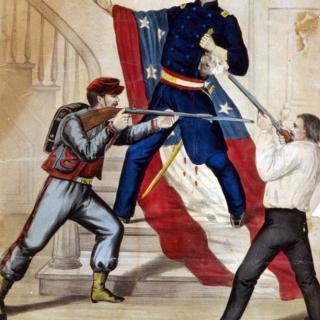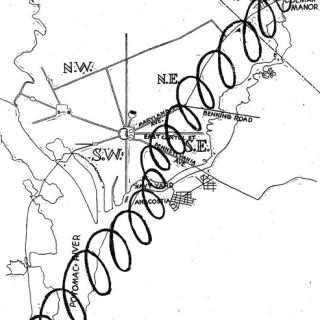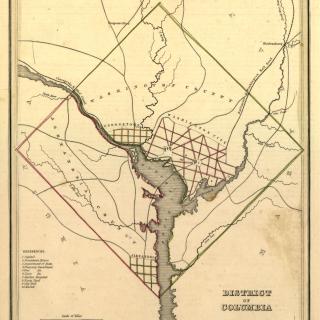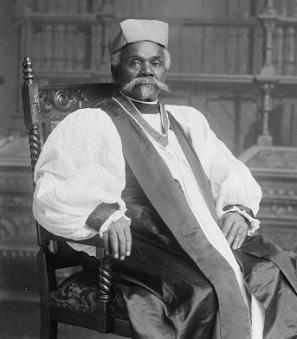Fortress Alexandria
After Union forces were routed in the first Battle of Bull Run in July 1861, they rushed back northward in a panic, realizing Washington was vulnerable to a Confederate counterattack that — fortunately for the Union — the enemy chose not to mount.
A few days afterward, when Maj. Gen. George B. McClellan was appointed military governor of the capital, he made a sobering assessment of its poor defenses. Though 50,000 troops, 1,000 cavalrymen, and eight batteries of artillery were deployed, they were situated mostly on low-lying areas, so that it would be easy for the Confederates to seize the high ground and bombard the capital. Some major roads were unsecured. All in all, as McClellan later wrote to President Lincoln's first Secretary of War, Simon Cameron: "In no quarter were the dispositions for defense such as to offer a vigorous resistance to a respectable body of the enemy, either in the position and numbers of the troops or the number and character of the defensive works."
As a result, the Union launched a crash campaign to protect Washington with a ring of outer defenses, which by the war's end would include 68 forts, 93 artillery batteries, and 20 miles of rifle trenches, as well as picket stations, blockhouse, and bridgeheads.
One key part of those defenses was Fort Ward, located in occupied Alexandria on 86 acres owned by Phillip Hooff, a wealthy Alexandria merchant who, despite being a slave owner, was a Union supporter. (For that reason, the land wasn't formally confiscated by Union officials, as they did with the estates of Confederate sympathizers.) The fort was named in honor of U.S. Navy Commander James H. Ward, who was killed in June 1861 by a Confederate sniper while commanding a flotilla tasked with protecting the Potomac from a rebel blockade.
Fort Ward, whose mission included controlling the Leesburg and Alexandria turnpikes, exemplified the evolution of Washington's defenses. It started out as a hastily constructed, poorly-planned mess, but eventually evolved into a formidable bulwark.
Ford Ward's construction began in September 1861, around the time an apparent Confederate artillery unit appeared on Munson's Hill, pointing their guns at the District. The apparent threat actually was a ruse — the barrels were just logs painted black — but the Union forces didn't know that, and so they rushed to erect a fort to counter the threat. Union engineers were stymied in doing a proper survey of the site because of the dense growth of trees, and that lack of information led to what could have been a fatal flaw in the fort's design: its guns didn't cover a ravine the Confederates could have used to mass for an attack.
Fort Ward's original 540-yard log-wall perimeter contained emplacements for two dozen artillery pieces. Starting in the spring and summer of 1863, Gen. John G. Barnard, the chief engineer in charge of Washington's defenses, worked to expand the fort and make it one of the largest in the system. According to a report that he later authored on Washington's fortifications, Barnard enlarged the perimeter to 818 yards and increased the number of gun emplacements to 36. He also added rifle trenches outside the walls. In May 1865, another touch was added — a ceremonial gate crowned by a turreted castle, the symbol of the Army's engineers. Some of the work was done by a crew of African-Americans, including some from the Freedmen's Village in Arlington that had been set up on land confiscated from Confederate Gen. Robert E. Lee's family.
Fort Ward was built in anticipation of a Confederate attack from the south. But when Confederate Lt. Gen. Jubal A. Early finally tried to attack Washington in July 1864, he and his forces came from the North, where they were repulsed by Union forces at the Battle of Fort Stevens.
After the war, Fort Ward, like the other parts of the fortification system, was disassembled. The land was returned to Hooff, who remained in Alexandria during the war. Hooff's family rented out the property and eventually sold it to pay debts. The area attracted African-Americans, including both war refugees and others who migrated northward, and it developed into a neighborhood called the Fort, which existed from the 1870s until the 1960s. The Fort's early residents worked for local whites doing farming, laundry, construction, and domestic housework, but unlike before the war, they were paid for their labor, enabling many to buy land and build houses. Some also worked in skilled trades such as blacksmithing or bricklaying. Generations that followed also found work in the federal government.
Eventually, many of the Fort's African-American residents moved elsewhere in search of opportunity, and by the 1950s, when Fort Ward was among the areas annexed by the city of Alexandria, the majority of the land in the area was owned by whites. By the 1960s, the city had purchased most of the land and converted it into a museum and historic site.





![Sketch of the mythical fuan by Pearson Scott Foresman. [Source: Wikipedia]](/sites/default/files/styles/crop_320x320/public/2023-10/Goatman_Wikipedia_Faun_2_%28PSF%29.png?h=64a074ff&itok=C9Qh-PE1)












